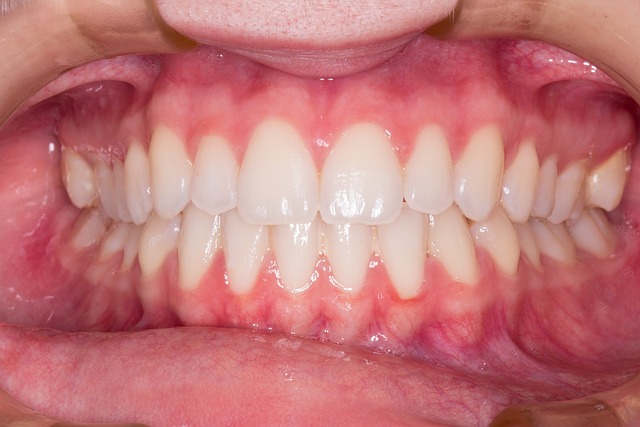Dental malpractice claims pose significant risks, including financial losses, legal fees, and reputation damage. Dentist malpractice insurance acts as a shield, covering lawsuits and settlement costs, enabling dentists to prioritize patient care without worry. This specialized coverage includes professional liability and errors & omissions (E&O) insurance, protecting assets and peace of mind. When selecting an insurer, research companies specializing in dental practices, focusing on reputation, financial stability, and customer reviews. In the event of a claim, the process involves reporting to the insurer, gathering information, negotiations, and legal defense. Practices can reduce claims through prevention protocols and compliance with industry standards, managing costs effectively while ensuring patient safety.
In the dynamic landscape of dental care, ensuring comprehensive protection against potential malpractice claims is paramount. This article guides dental professionals through the intricate world of dentist malpractice insurance, equipping them with knowledge to safeguard both their practices and patients. From understanding common scenarios and risks to navigating the claim process, we explore essential strategies for managing exposure. By delving into available policy types and choosing the right provider, dentists can secure robust coverage while keeping costs manageable.
- Understanding Dental Malpractice Claims: Common Scenarios and Risks
- The Importance of Dentist Malpractice Insurance: Protecting Your Practice and Patients
- Types of Dental Malpractice Insurance Policies Available
- How to Choose the Right Dental Malpractice Insurance Provider
- Claim Process and What to Expect After a Malpractice Incident
- Cost-Effective Strategies for Maintaining Comprehensive Dental Malpractice Coverage
Understanding Dental Malpractice Claims: Common Scenarios and Risks

Dental malpractice claims can arise from a variety of scenarios, each carrying potential risks for dental practices. Common instances include misdiagnosis or failure to diagnose oral conditions, errors in treatment planning or execution, and negligence during procedures. For example, a dentist might mistakenly drill into a healthy tooth or fail to recognize signs of an infection, leading to unnecessary pain and additional procedures for the patient.
These claims can result in significant financial losses, legal fees, and damage to reputation. Therefore, comprehensive dental malpractice insurance is crucial for protecting practices and their professionals. Such insurance provides financial coverage against lawsuits and settlement costs, offering peace of mind and ensuring that dentists can focus on delivering quality care without the constant fear of malpractice claims.
The Importance of Dentist Malpractice Insurance: Protecting Your Practice and Patients

Dentist malpractice insurance is an essential component for any dental practice, safeguarding both the business and its patients. In the event of a lawsuit or patient complaint, this specialized coverage provides financial protection against potential claims of negligence, medical errors, or omissions. As dentists are held to high standards, having such insurance is crucial to mitigate risks associated with providing dental care.
By purchasing dentist malpractice insurance, you ensure that your practice remains secure and sustainable. It offers peace of mind, knowing that if an unexpected incident occurs, your financial stability is protected. This coverage can help cover legal fees, settlement costs, and medical expenses arising from a malpractice claim, ensuring your dental office can continue to serve patients without the burden of significant financial strain.
Types of Dental Malpractice Insurance Policies Available

When it comes to protecting your dental practice, one of the most crucial considerations is securing adequate dentist malpractice insurance. This type of coverage shields you from potential financial disasters arising from medical errors or omissions during dental procedures. The good news is that several specialized policies are tailored to meet the unique needs of dentists and their practices.
Available options include professional liability insurance, which covers damages resulting from negligence, and errors & omissions (E&O) insurance, designed to protect against claims of malpractice due to mistakes in treatment planning or execution. Some policies even offer additional coverage for legal fees, court costs, and settlement expenses. By choosing the right dentist malpractice insurance, you can ensure your peace of mind and financial security, allowing you to focus on providing quality patient care.
How to Choose the Right Dental Malpractice Insurance Provider

When selecting a dental malpractice insurance provider, thorough research is key. Look for companies specializing in dental practices, understanding the nuances of dental procedures and regulations. Check their reputation, financial stability, and customer reviews to ensure they deliver reliable coverage and excellent service. Consider policies that offer comprehensive protection against various dental malpractice claims, including negligence, personal injury, and property damage.
Evaluate the policy’s limits, exclusions, and conditions carefully. Understand what’s covered and what’s not, and assess if the deductibles and premiums align with your practice’s risk profile. Opt for providers offering additional benefits like legal defense fees, case management services, and access to loss control resources to help mitigate risks. Choose a provider that provides 24/7 support and prompt claims processing for peace of mind.
Claim Process and What to Expect After a Malpractice Incident

In the event of a malpractice incident, having comprehensive dental office insurance in place is paramount for protecting your practice and ensuring its longevity. The claim process begins when a patient files a formal complaint or lawsuit against your practice due to perceived negligence or substandard care. Upon receiving such a notification, promptly report the incident to your insurance provider as per the policy guidelines. They will assign a claims adjuster to handle the case, who will gather relevant information and documents related to the incident.
During this period, expect detailed inquiries about the treatment provided, including patient records, consent forms, and any communication logs. It’s crucial to cooperate fully with the insurance company and offer all necessary documentation to strengthen your defense. The adjuster may also arrange for an independent medical examination or review to assess the validity of the claim. What follows is a series of negotiations, where your insurance provider aims to resolve the claim either through settlement or, if warranted, defense in court. Having dentist malpractice insurance ensures that you have legal representation and financial backing throughout this process, safeguarding your dental practice from significant financial losses and reputational damage.
Cost-Effective Strategies for Maintaining Comprehensive Dental Malpractice Coverage

Many dental practices struggle with balancing the cost of comprehensive dental malpractice coverage while aiming for budget efficiency. While dentist malpractice insurance is a critical component of risk management, it doesn’t have to break the bank. Consider these cost-effective strategies:
Implementing robust prevention protocols and patient safety measures can significantly reduce claims frequency. Investing in regular staff training on infection control, proper instrument sterilization, and patient intake procedures not only minimizes errors but also demonstrates due diligence, potentially lowering insurance premiums over time. Additionally, staying current with industry regulations and best practices ensures your dental office operates within a framework that reduces malpractice risks.
